Acacia chalkeri
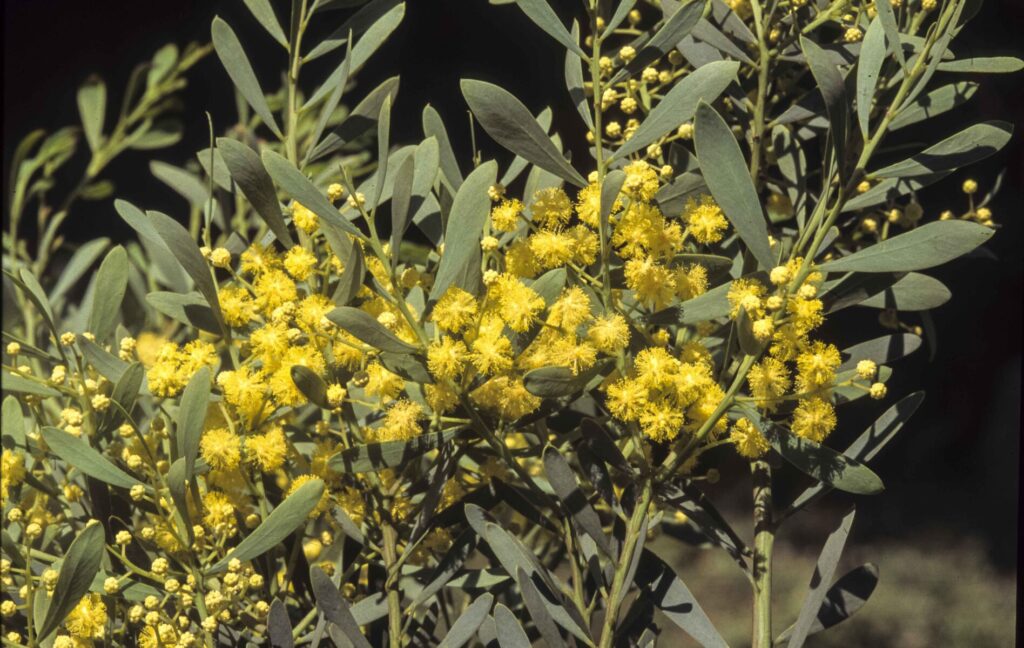
Acacia chalkeri grows to 4 m high and about 2 m wide, with a bushy habit. It is a species confined to a small area around the Wombeyan Caves in the Southern Highlands of New South Wales (north-west of Mittagong) where it grows in shallow limestone-enriched soils.
Acacia clandullensis
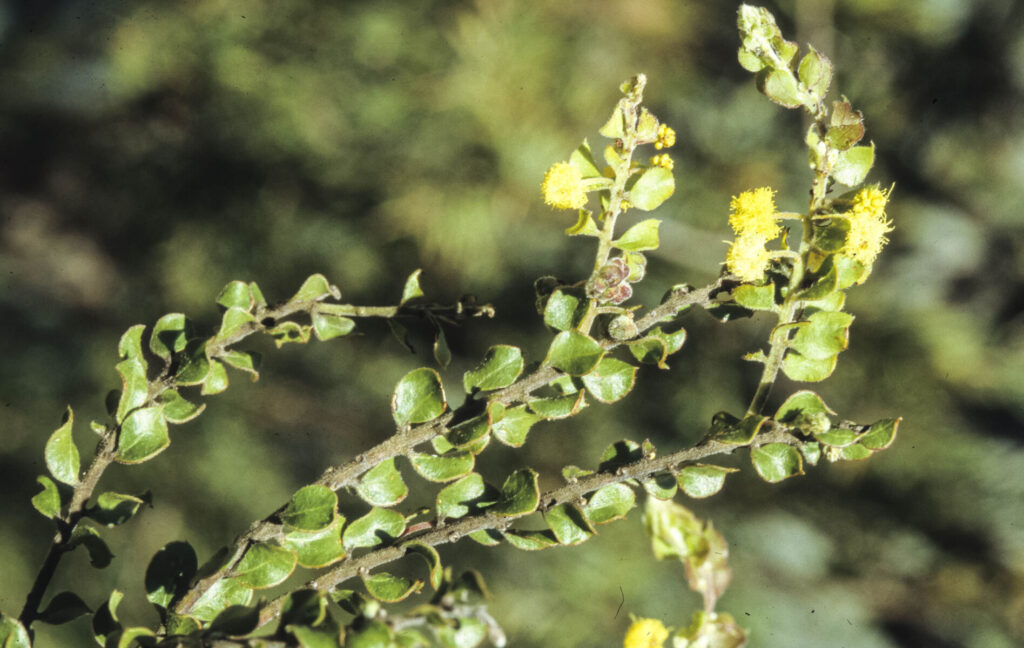
Acacia clandullensis is an open pendulous shrub growing 1 to 2 m high. It is restricted to the Clandulla and Glen Davis areas in the western coastal / tablelands area, west of Sydney, growing at higher altitudes in stony sandy or clay-loam soils. It is associated with Western Scribbly Gum (Eucalyptus rossii) woodlands.
Acacia jonesii
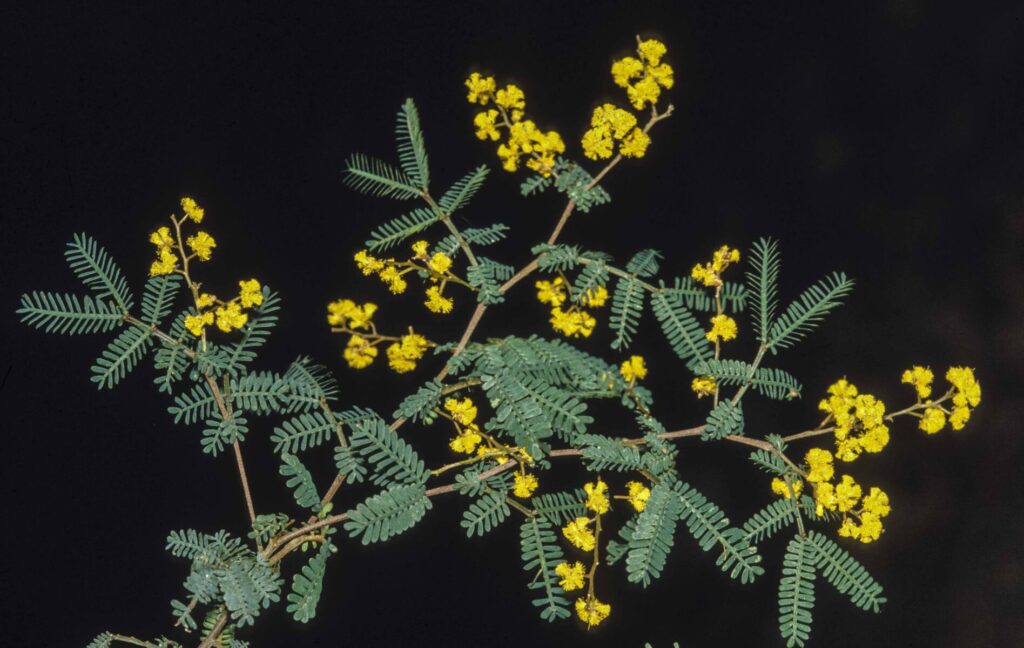
Acacia jonesii is a large shrub to 4 m high and 2 m wide, found in a limited distribution in coastal regions, in central and southern New South Wales. It is restricted to the area between Bargo in the north out to Goulburn in the east and down to around Nowra in the south; it is still considered to be rare. It grows in sandstone and in clay soils, as a part of dry sclerophyll woodland and forest communities.
Acacia kybeanensis
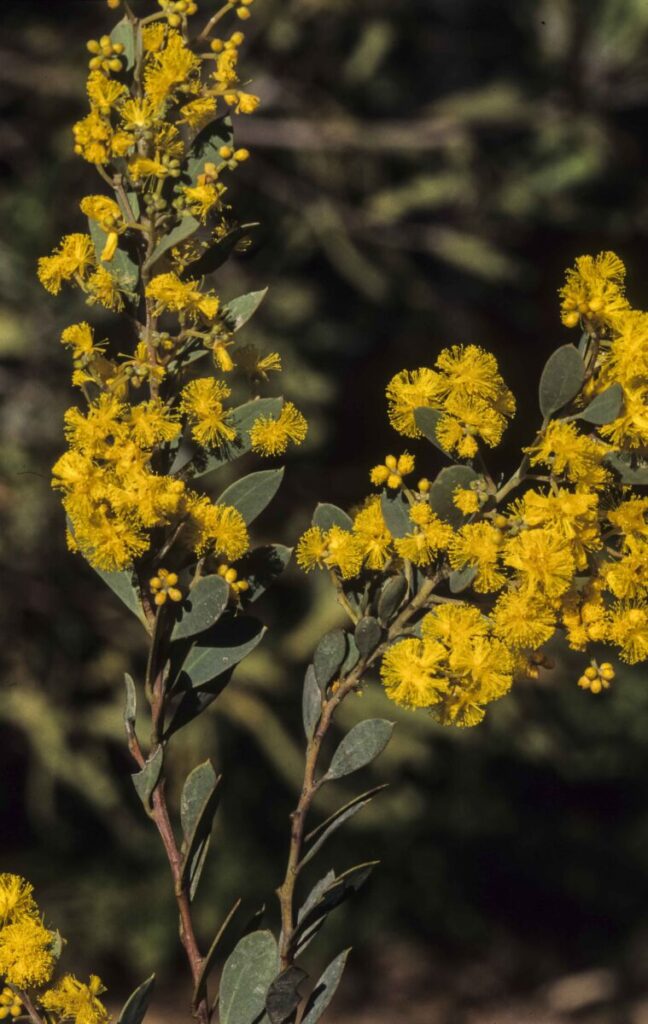
Acacia kybeanensis is a spreading shrub to 2.5 m tall, growing in two general areas; around the NSW Blue Mountains/Newnes area; and south from the Snowy Mountains into the Gippsland area of Victoria. It is often found on rocky slopes in rocky sandy soils as a part of Eucalyptus woodland communities.
Acacia lanigera
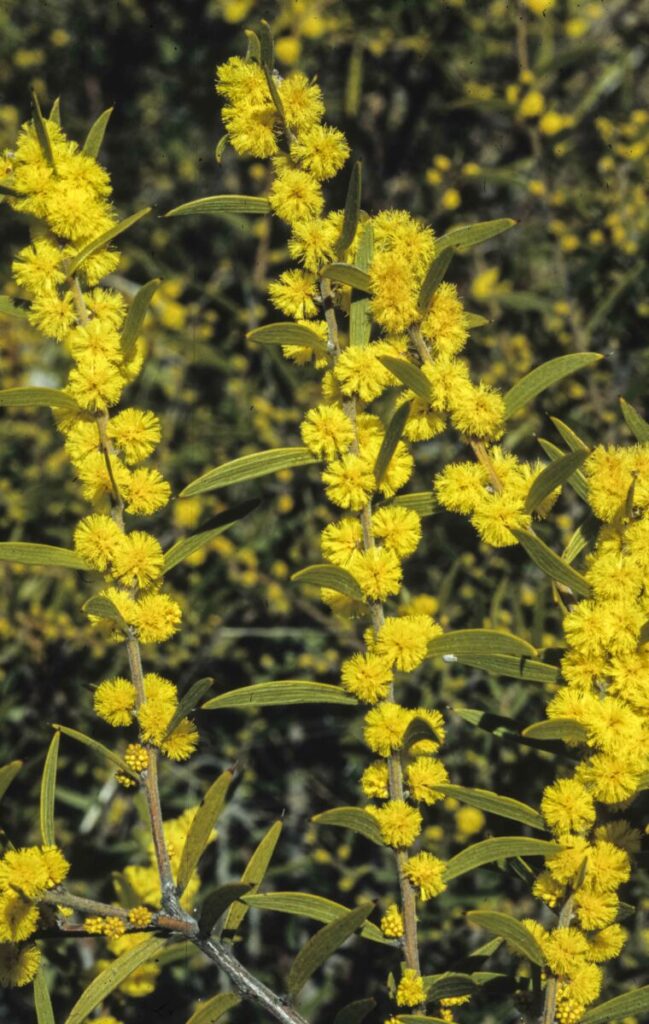
Acacia lanigera is a rounded shrub to 2 m tall, growing in woodland and dry sclerophyll forest, in poor gravelly and sandy soils in NSW, south from Coonabarabran area and into Victoria, mainly found on the tablelands and western slopes of NSW, as well as the south coast.
Acacia hamiltoniana
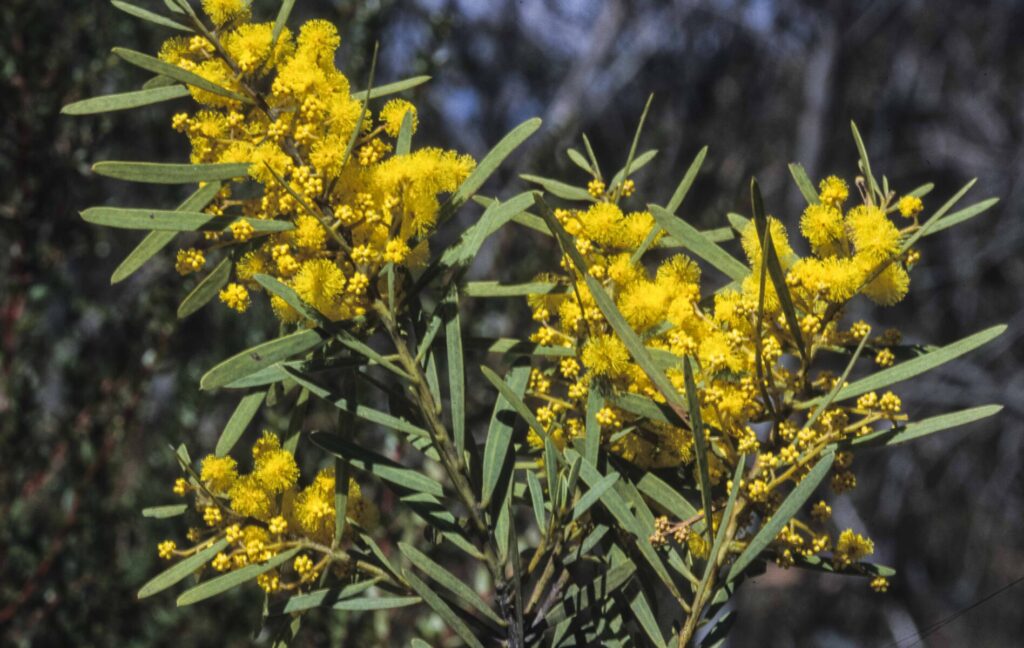
Acacia hamiltonianais a large shrub to 3 m high, and its distribution is in the Great Dividing Range and the associated foothills in western New South Wales, from around Rylstone in the north, down to around the Clyde River in the south where it is growing in sandy or loamy soils as well as sandstone outcrops.
Acacia hispidula
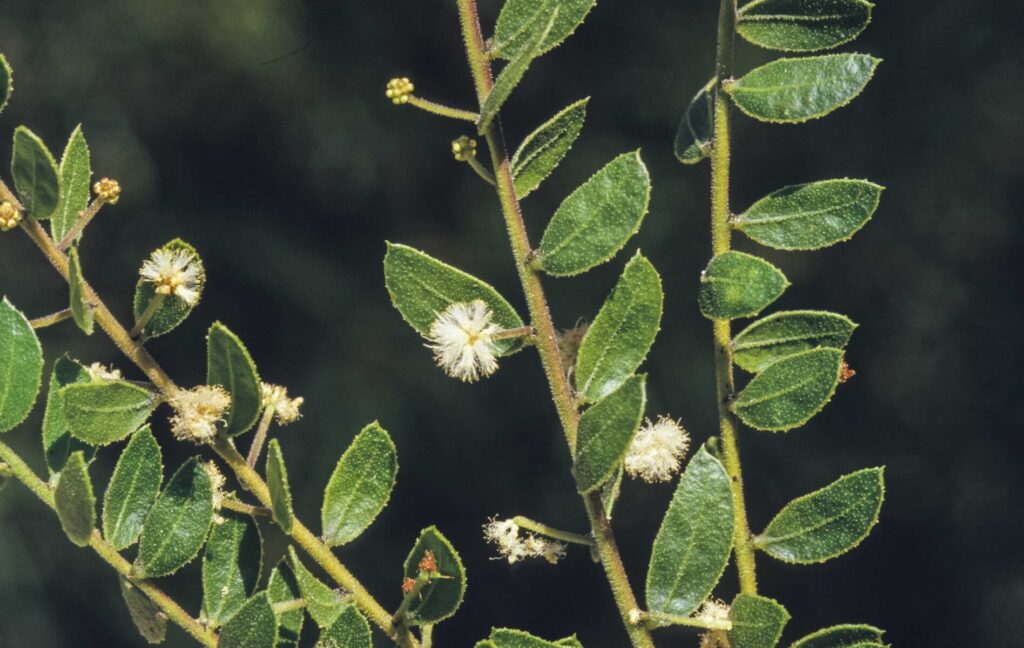
Acacia hispidula an erect or spreading shrub to 2 m tall. It has a disjunct distribution; in the south of NSW, it is found in coastal localities north from Nowra and is especially common in the Sydney region; then it is found further north from Coffs Harbour and inland as far as Brisbane in QLD.
Acacia asparagoides

Acacia asparagoides is a wattle shrub to 2 m tall with a restricted distribution, confined to the Blue Mountains of NSW, between Newnes Junction and Lawson. Here, it grows in dry sclerophyll forest and heath on sandstone.
Acacia flocktoniae
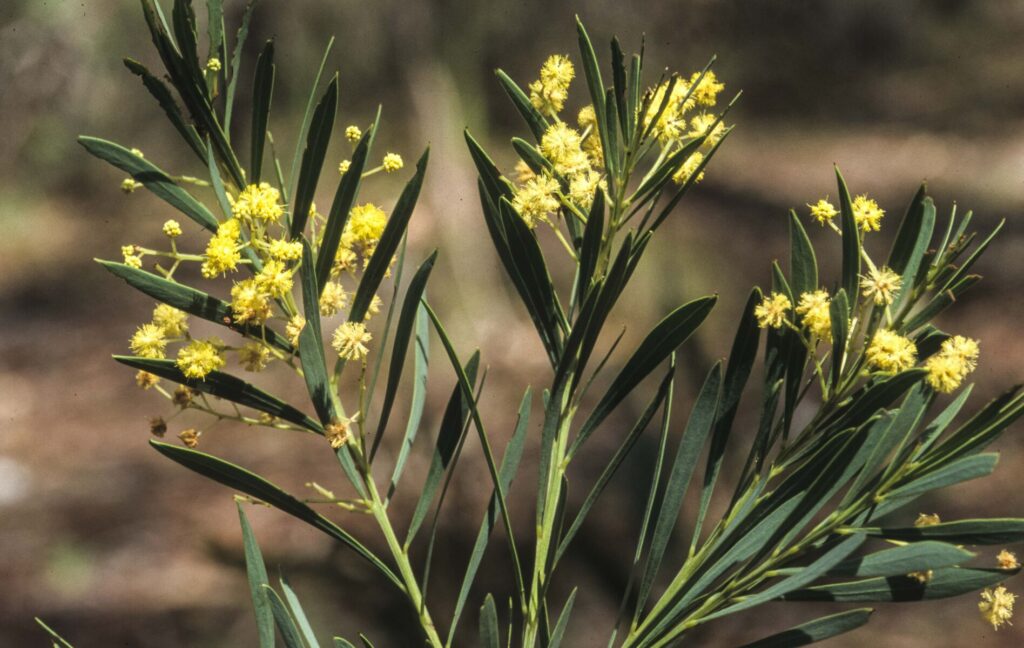
Acacia flocktoniae is a shrub growing to 3 metres high, with a restricted distribution, found on sandstone, in dry sclerophyll forest only in the Southern Blue Mountains (at Mt Victoria, Megalong Valley and Yerranderie, south to Picton) in New South Wales.
It is a listed threatened species.
Acacia gordonii

Acacia gordonii is a shrub potentially reaching 1,5 m tall, growing in dry sclerophyll forest and heath on sandstone outcrops in New South Wales between Bilpin in the north to Faulconbridge in the south in the foothills of the Blue Mountains. It is a rare and endangered plant in the wild.
Crowea saligna

Crowea saligna has a restricted distribution in the Greater Sydney basin, from Woy Woy in the north to Yerrinbool in the south and west to the Blue Mountains. It is typically found in sandstone heaths, shrub lands and dry sclerophyll woodlands and forests.
Acacia gladiiformis

Acacia gladiiformis grows to 3 m tall, on the tablelands and western slopes of the Great Dividing Range in New South Wales, from Warialda in the north through to Cowra in the south. Also grows in the south east area of Queensland.
Acacia falcata
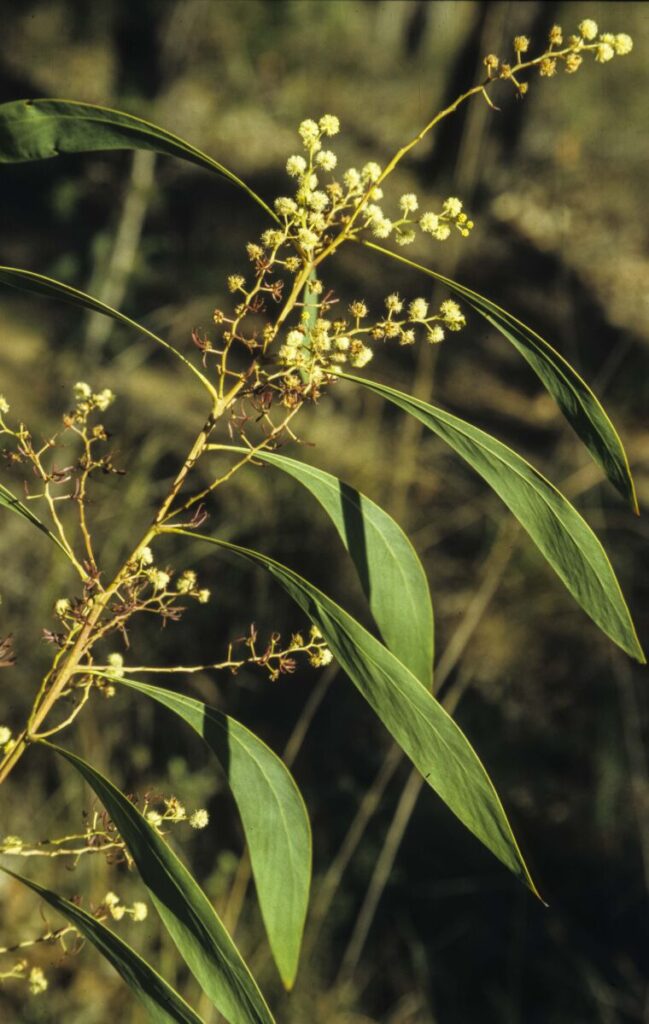
Acacia falcata is a spindly and flexuous shrub, growing to 5 m high and only about 1 m wide. It has a somewhat arching/weeping habit. It grows from Queensland, south through eastern New South Wales to Bermagui on the south coast. Its range extends into the tablelands and central western slopes. It grows predominantly on shale soils in open forests and woodlands.
Acacia obtusata
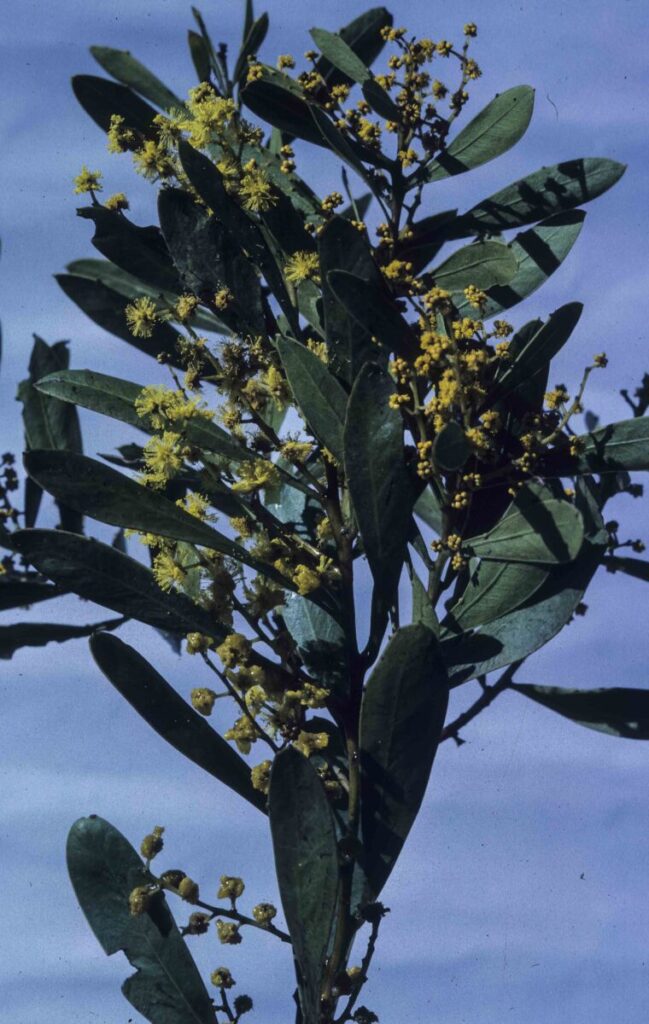
Acacia obtusata is a shrub, growing with a spindly habit up to 3 m tall and 2 m wide. It grows in NSW on the central and southern tablelands and western edges of coastal subdivisions, from Rylstone district to near Braidwood across to Tumut, common in the western Blue Mountains. Its habitat is chiefly dry sclerophyll woodland and forest.
Acacia elongata
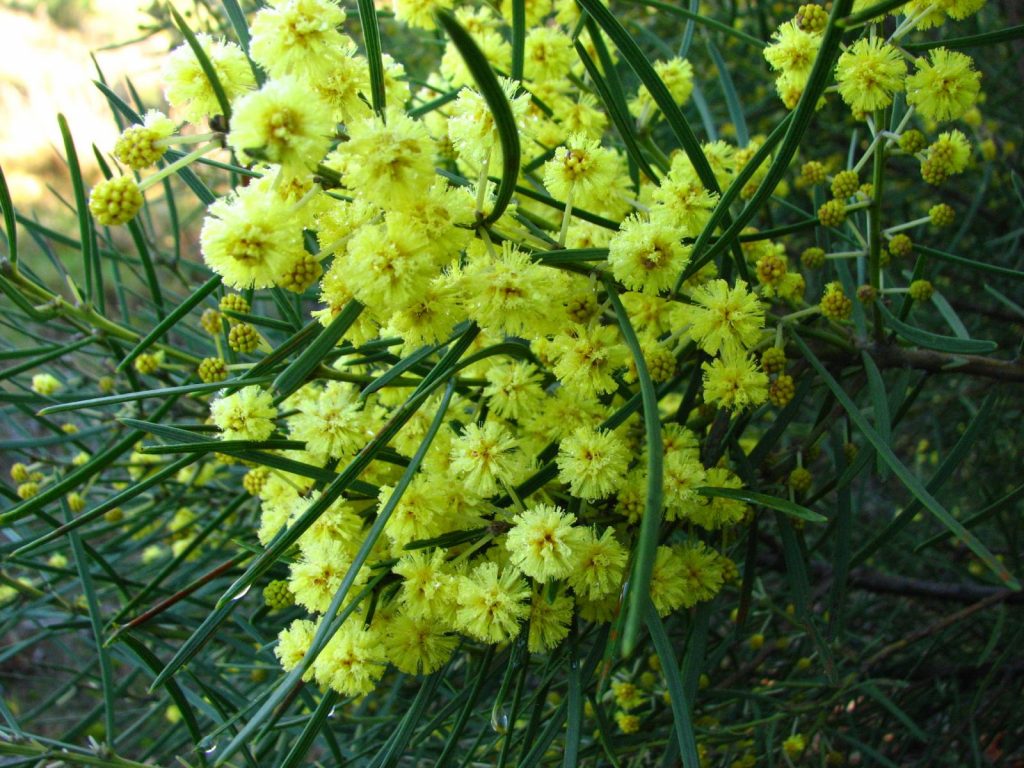
Acacia elongata is a large shrub growing to 3 m or a bit taller by 1.5 m wide in sunny damp situations in NSW. It is usually found in sandstone and sandy woodlands and heath. Grows mainly along the NSW coast and tablelands subdivisions but also extends into the western slopes.
Abutilon oxycarpum
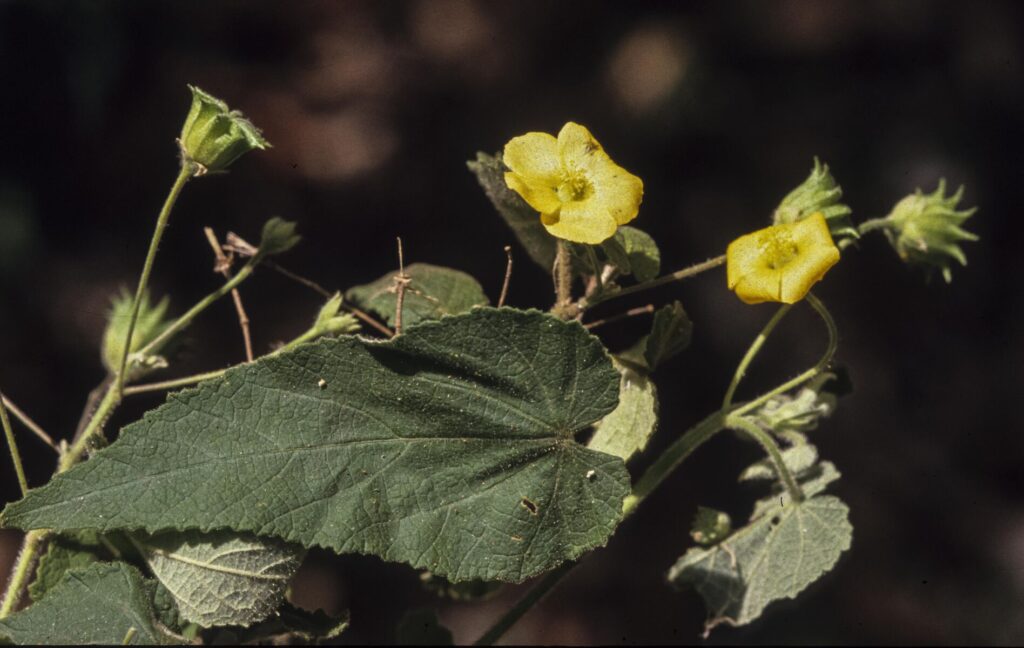
Abutilon oxycarpum is a soft-woody shrub growing up to 2 m tall, found naturally on rocky hill slopes as well as creek banks in dry sclerophyll woodlands and forests and sometimes in rainforest, in all states of Australia with the exception of Tasmania. In NSW, it grows on the coastal, tablelands and western slopes, with most of its distribution north of Sydney (but also extending down the south.
Callistemon linearifolius
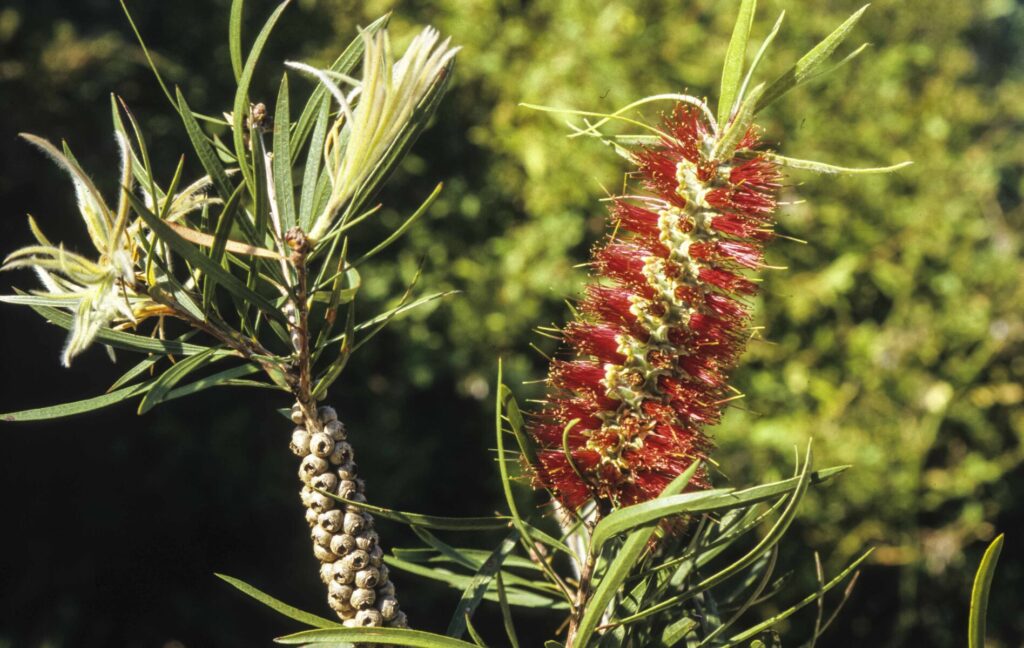
Callistemon linearifolius is a tall shrub to 4 m high by 3 m diameter. It grows in dry sclerophyll forest and woodlands on the NSW coast and adjacent ranges, chiefly north from Georges River, Sydney, to Nelson Bay, and occasionally further north in NSW to the Queensland border.
Callistemon linearis
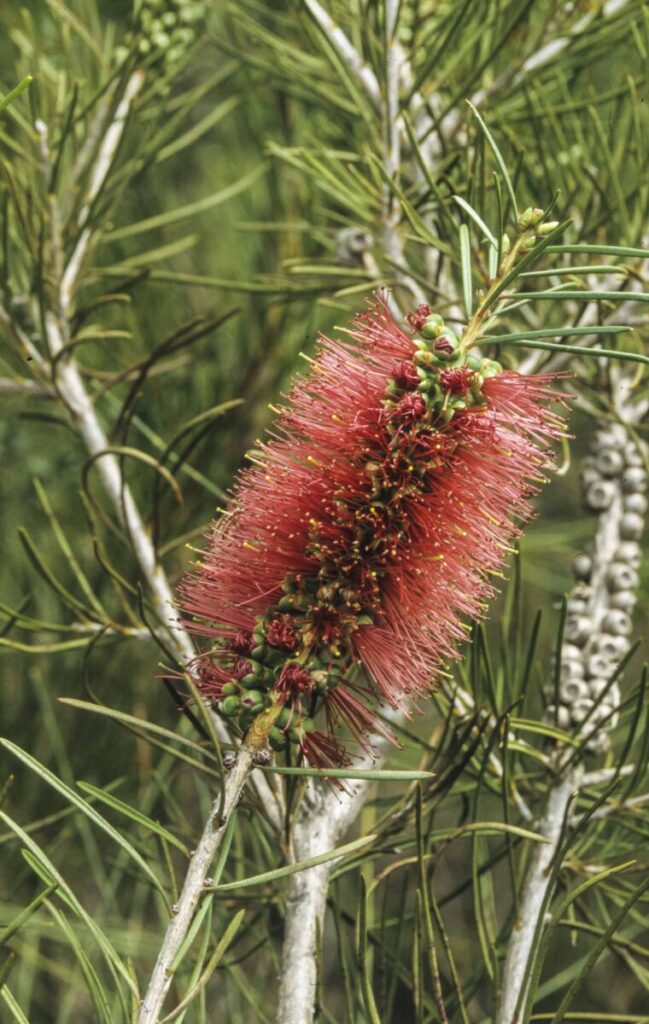
Callistemon linearis is a shrub growing to 3 m high in forests and woodlands from central New South Wales (around Nerriga) to south-east Queensland. It grows on the coast, tablelands, western slopes and plains of NSW.
Callistemon pallidus
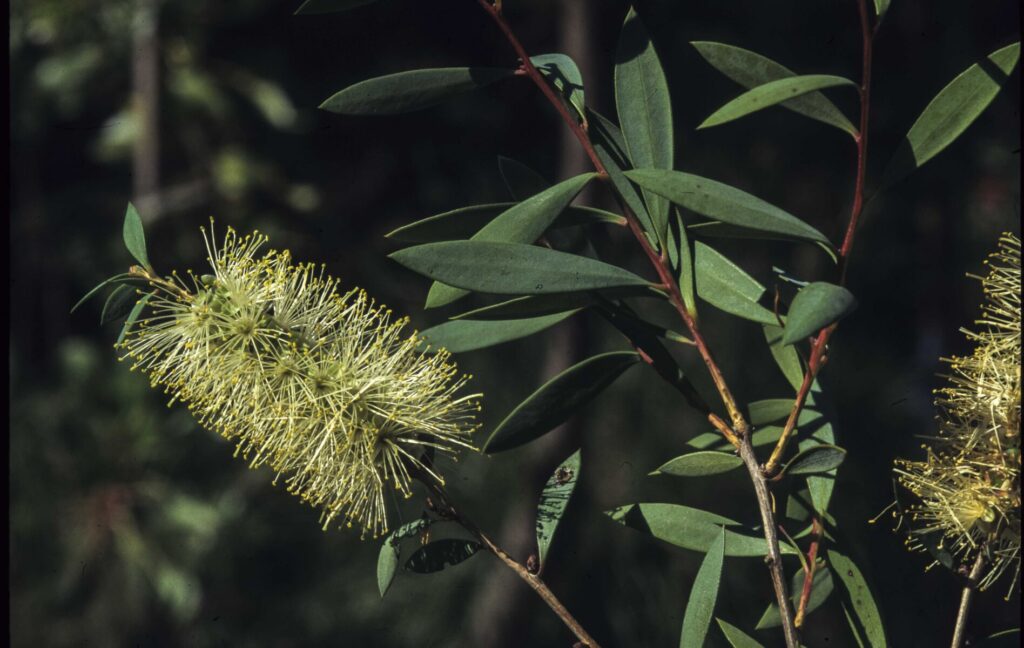
Callistemon pallidus has slender spreading branches growing to a height of 3 to 5 m by 2 m across. It is common on wet, rocky sites of the eastern ranges and occurs naturally in New South Wales, the Australian Capital Territory, Victoria and Tasmania. In the ACT, it is a dominant species in heath on exposed mountain slopes. It grows primarily on the coast and tablelands regions of NSW.
Callistemon megalongensis
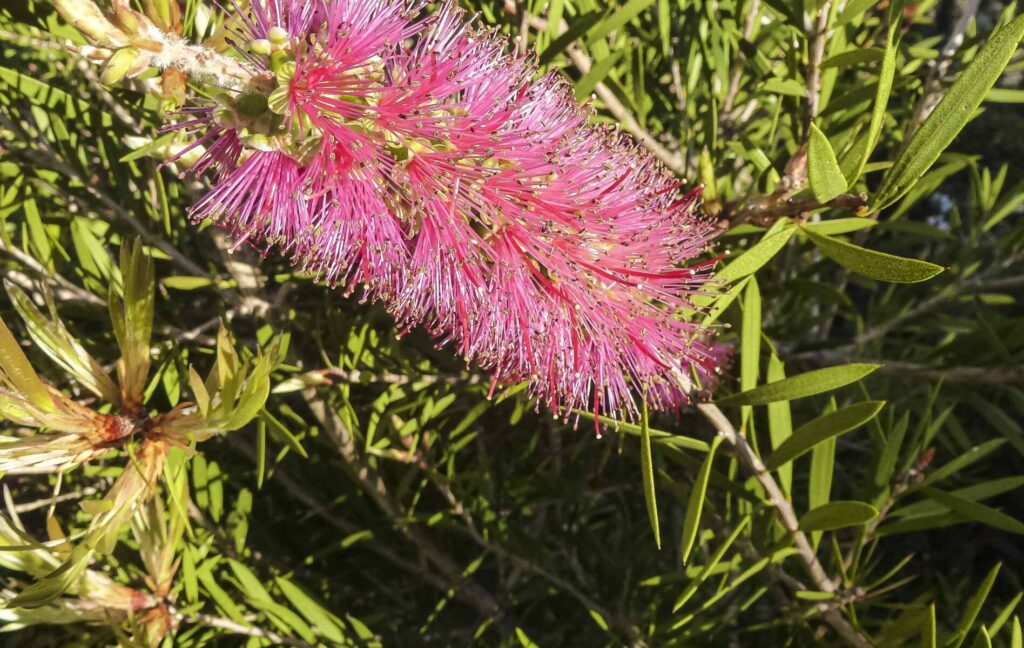
Callistemon megalongensis is a shrub growing to around 4.5 m tall with soft, flaking or peeling bark. It is similar to Callistemon citrinus which occurs in the same area and is difficult to distinguish from it, except when in flower. Found in shrubby swamp communities near streams.
Leptospermum ‘Lemon Hedge’
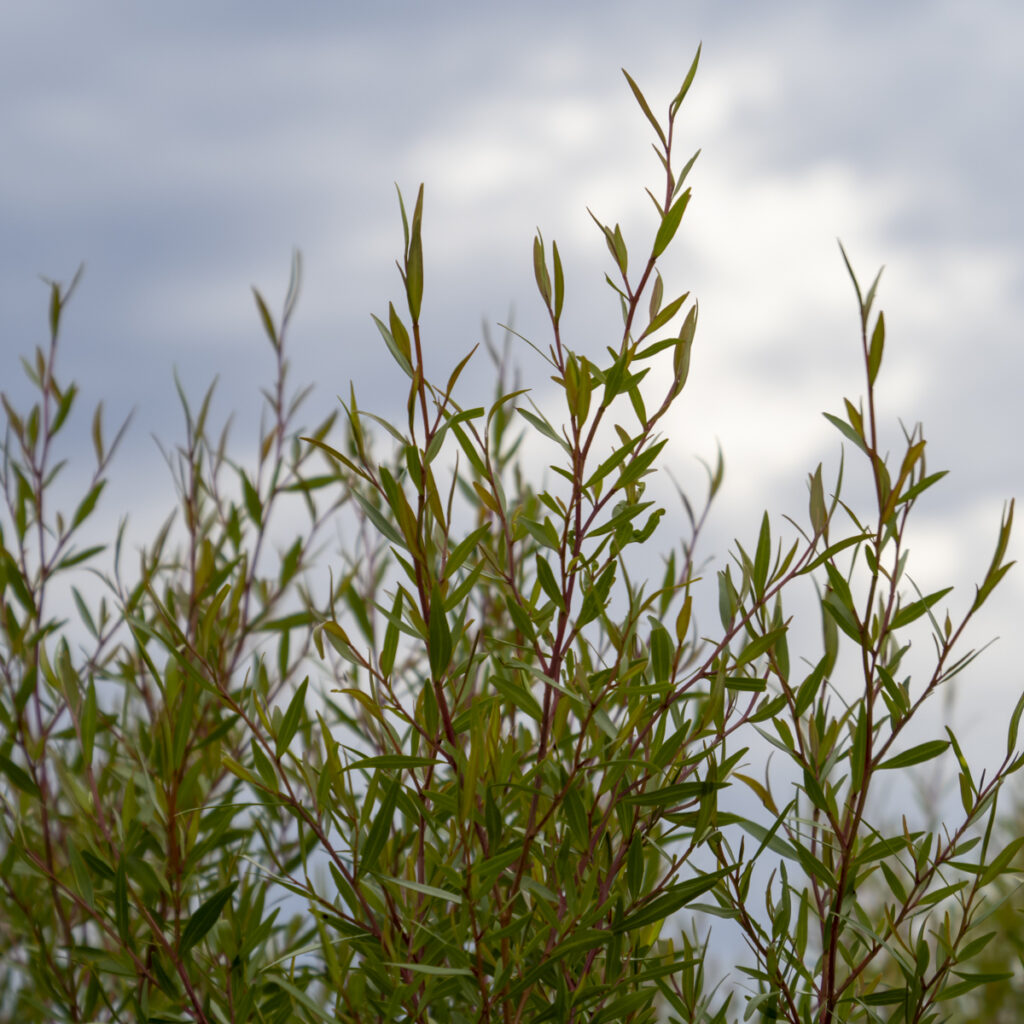
Leptospermum ‘Lemon Hedge’ is a narrow, upright shrub to 2.5–3 metres tall and 1–1.5 m wide with light green foliage which can have red tips. It does have small white flowers, but is grown for the foliage rather than the flowers. It is a popular screening plant with soft foliage for narrow positions.
Epacris pulchella
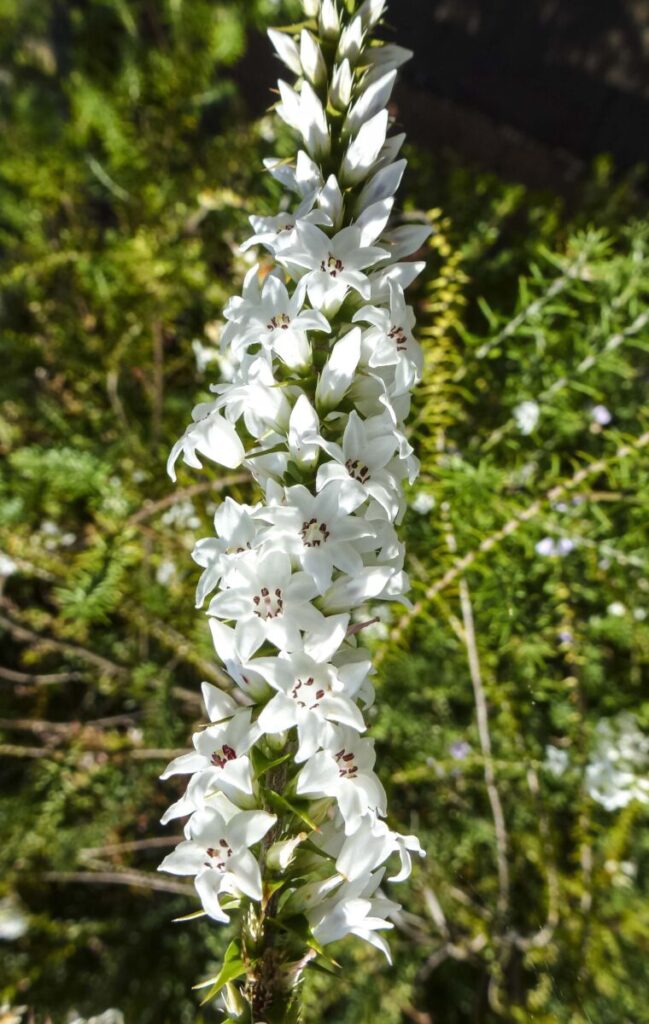
Epacris pulchella is a slender erect shrub to 1.5 m high but usually shorter, it grows in scrub, heath and dry sclerophyll forest on sandy soils. Its range is on coast and tablelands, north from Conjola and Ettrema Creek into SE Queensland.
Callistemon rigidus
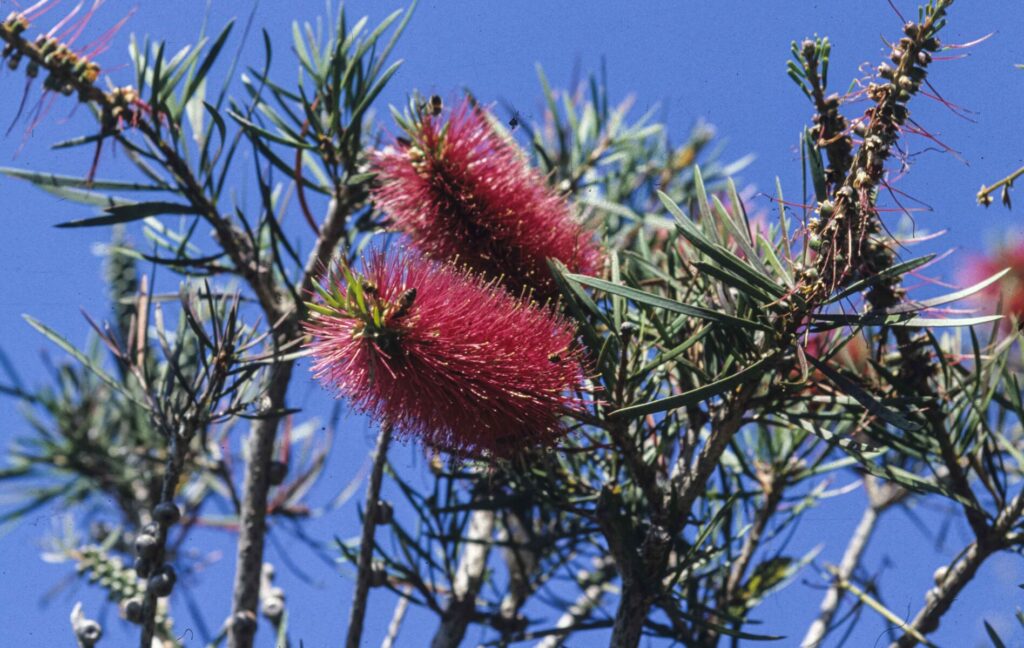
Callistemon rigidus grows to 3 m high by 2 m wide. Typically found in damp places such as sandy swamps and sandstone creeklines. It is widespread on the coast, ranges and extends into the western slopes, but is found mainly in the Sydney district. Leaves are narrow and linear to 7 cm long, and only 4 mm wide and very rigid.
Baeckea linifolia
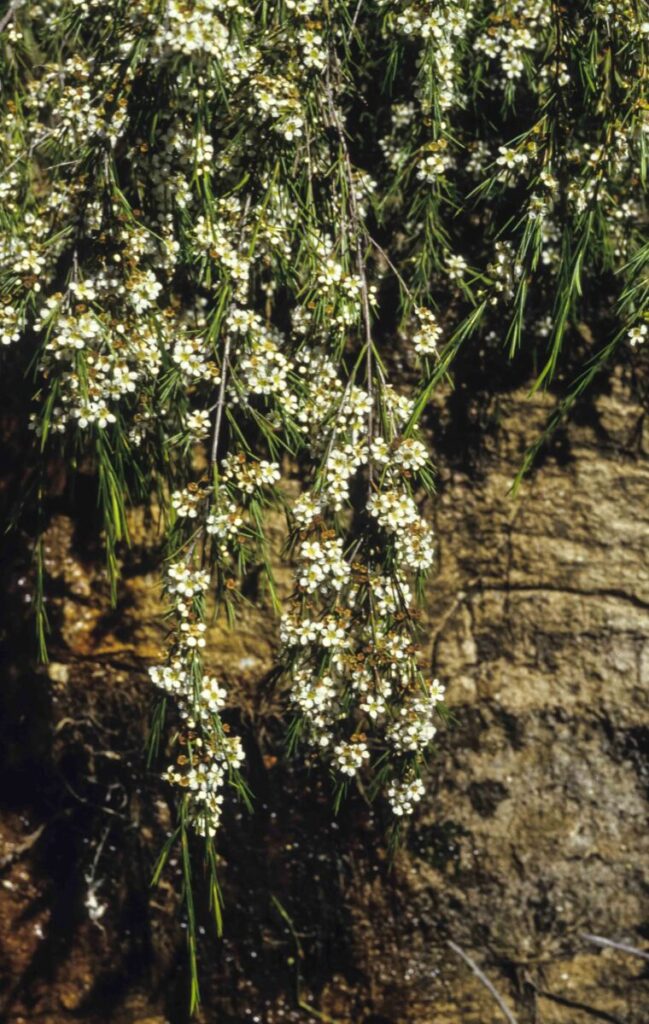
Baeckea linifolia is found in heaths, usually in damp areas and near sandstone waterfalls and creeks (coast and tablelands), from south-east Queensland to eastern Victoria where it is rare. It is an ideal screen plant, occasionally self-seeds and the flowers attract bees.
Persoonia pinifolia

Persoonia pinifolia is a large shrub about 2–4 metres, with soft pine-like leaves. It is very common in sheltered open forests on sandstone in the Sydney region, including along sandstone creeks and pools. Use as an Australian native Christmas tree.
Bauera rubioides

Bauera rubioides An attractive border plant if pruned, otherwise it likes to scramble all over the place, if ample moisture is available. Prune after flowering to keep compact. Bauera rubioides occurs in coastal heaths and forest of New South Wales, Victoria, Tasmania, South Australia and Queensland. It grows along the entire coast and tablelands of NSW, usually on sandstone creek lines and heathlands.
Acacia quadrilateralis

Acacia quadrilateralis is a medium shrub, growing up to 3 metres tall with a spindly habit. It is found in south-eastern Queensland and north-eastern New South Wales, down to Sydney (north of Botany Bay), with a southern disjunct population at Ulladulla. It typically grows on sandy soils over sandstone as a part of open Eucalyptus woodland communities and heathlands.
Acacia pubescens
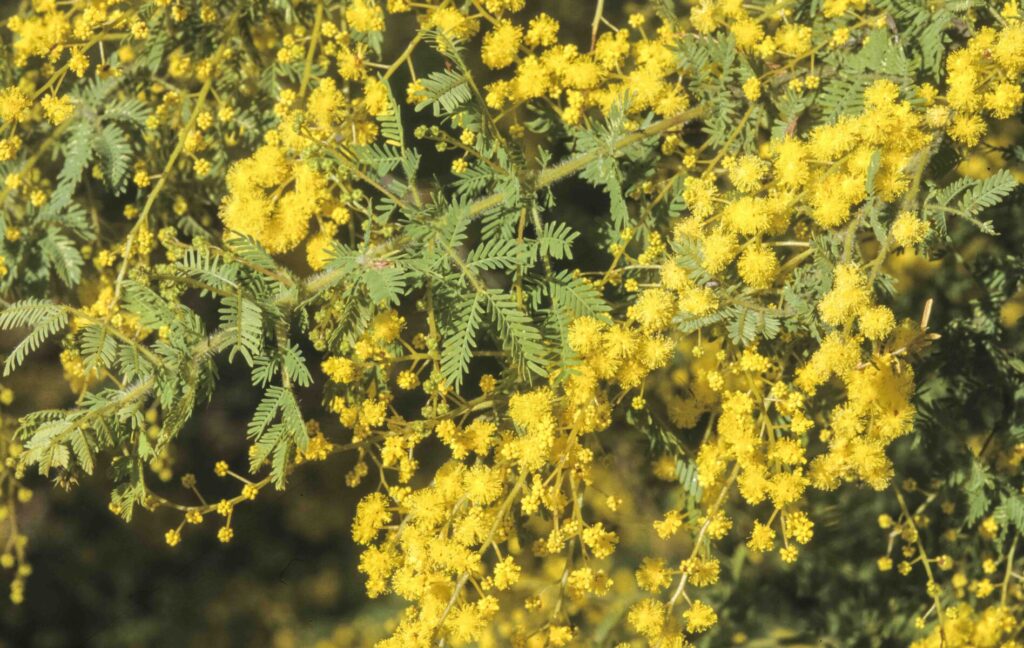
Acacia pubescens is a spreading to slightly weeping shrub 2–5 m high with smooth bark. It occurs in open woodland on alluvial gravel soils, often with ironstone, around the Bankstown-Fairfield-Rookwood area and the Pitt Town area in Sydney. It can also occur at Barden Ridge, Oakdale and Mountain Lagoon to the west, extending to Nowra and Aylmerton to the south, south-west. It is listed as threatened at the Commonwealth and State level.
Acacia saliciformis

Acacia saliciformis is an attractive small tree or large shrub growing to 7 m with smooth, greyish bark and a weeping habit. It grows in wet and dry sclerophyll forest, in gravelly, sandy and clay loam soils. It is found in parts of NSW from Bilpin in the south to around Bulga in the north, and possibly also growing in the Budawang Ranges. It has red new growth in spring.
Banksia cunninghamii
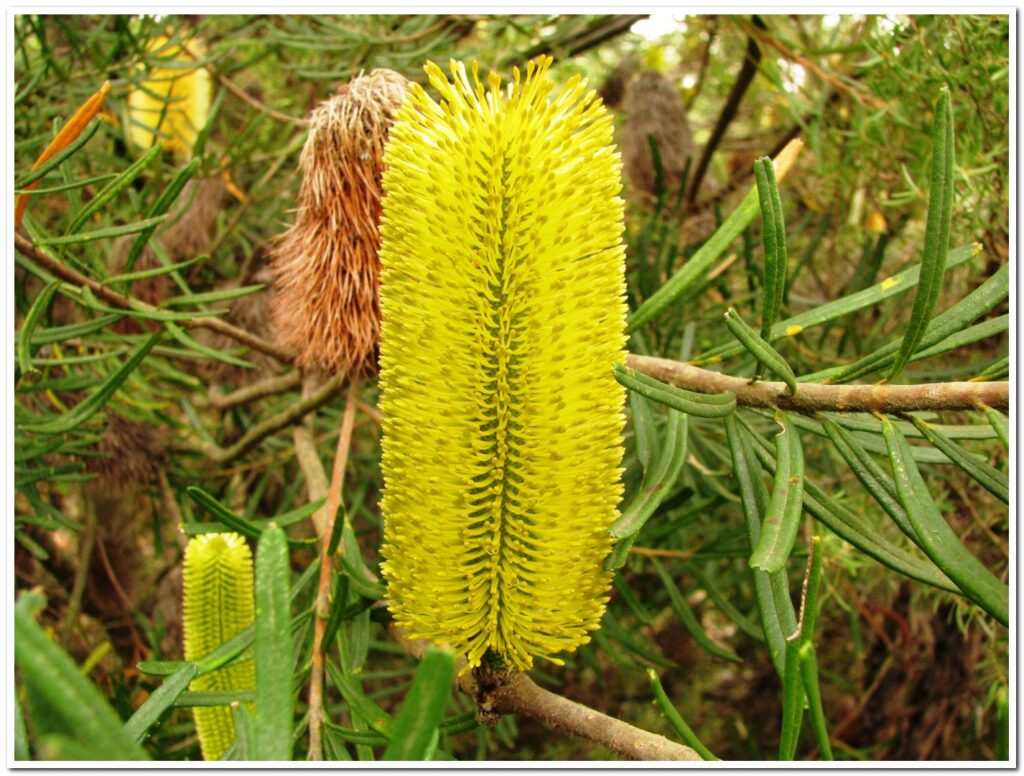
Banksia cunninghamii is a large shrub or small tree to 6 to 7 m tall. Its leaves are narrow with fine serrations near the end. It forms an open canopy with flowers amongst the foliage. Originally considered a variety of B. spinulosa, but in NSW it is now considered a separate species. It is found in several disjointed populations along the east coast and ranges from northern NSW to eastern Victoria.
Acacia subtilinervis
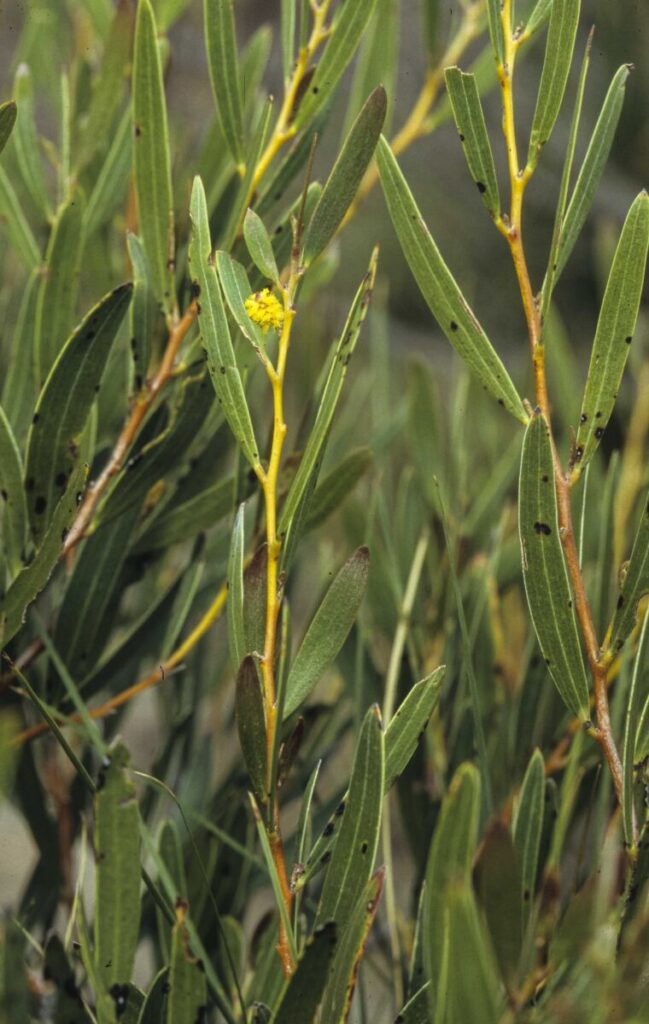
Acacia subtilinervis is a tree or shrub growing to 4 metres with grey coloured bark and can have a spreading or erect habit. It is found in NSW, south from around the Lithgow area, growing mainly on the tablelands and then found on the coast south from around Nowra. It also grows in Victoria. It is often found among rocky outcrops as a part of heathland or dry sclerophyll forest communities.
Acacia lunata
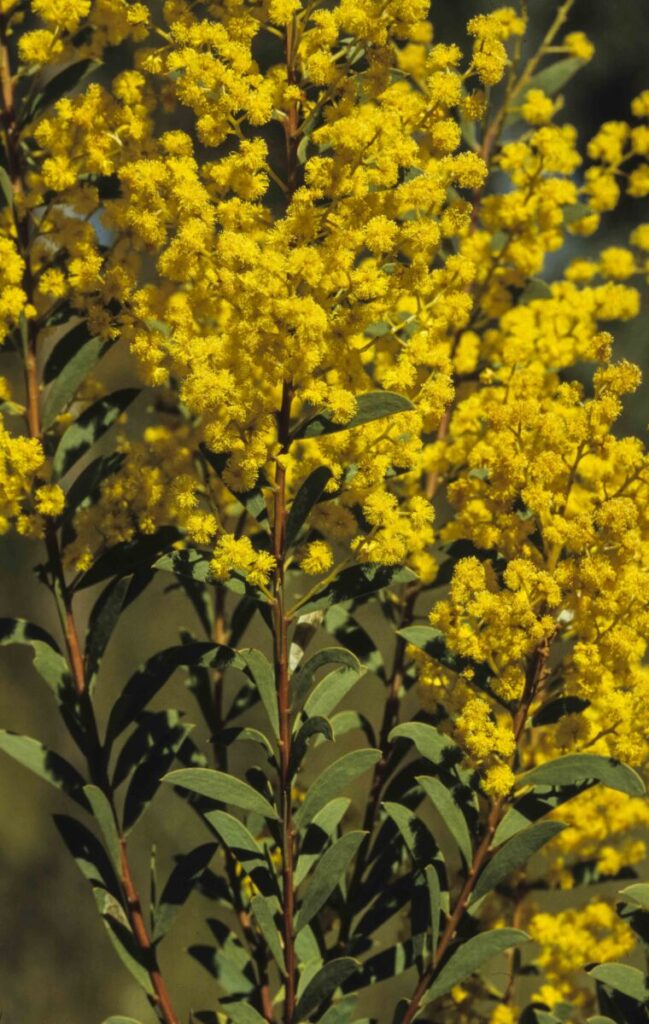
Acacia lunata is a shrub to 3 metres high found only in NSW, from around Cessnock in the north down to around Richmond in the south. It is on slopes and around creeks in sandy and sandstone based soils as part of open Eucalyptus woodland communities. It has crescent-shaped phyllodes.
Hibbertia salicifolia syn. Adrastaea salicifolia
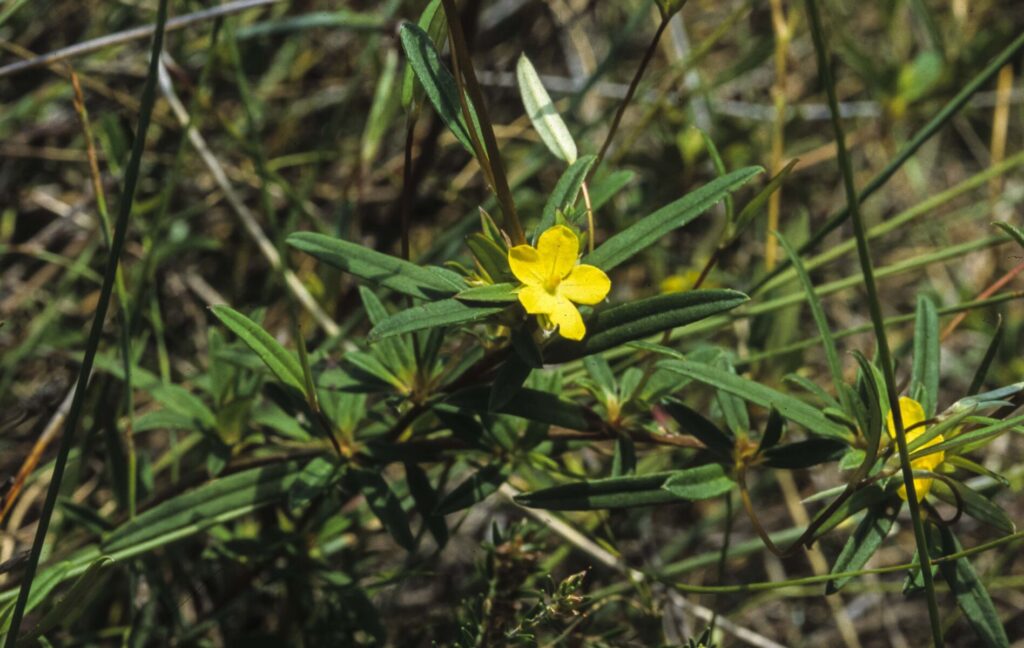
Hibbertia salicifolia is a slender subshrub or undershrub growing up to 2 m tall, found naturally from about the Royal National Park in southern Sydney, New South Wales, along the coast to north-east Queensland. It grows in coastal swamps and wet heath in full sun; and not all that common.
Acacia undulifolia
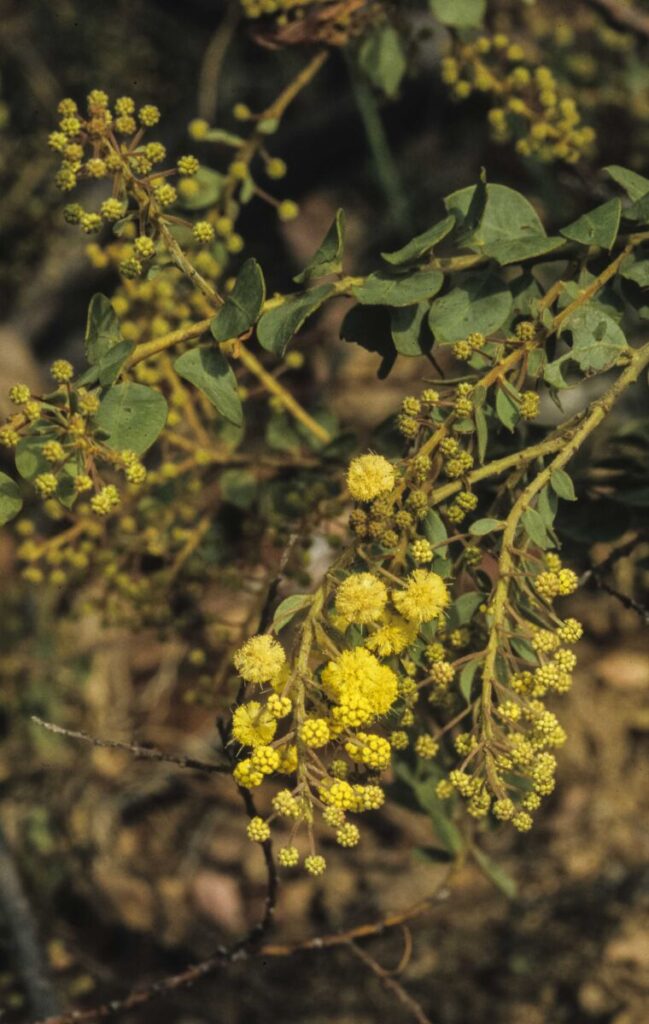
Acacia undulifolia is a straggly shrub to 3 m high with pendulous branches. It is naturally found in NSW in a scattered distribution over the upper Blue Mountains: from the north, near Mount Monundilla; to the south around the Megalong Valley; as far west as the Cox River; extending to the east as far as the Watagan Range and Bucketty.
Acacia mariae synonym: Acacia tindaleae
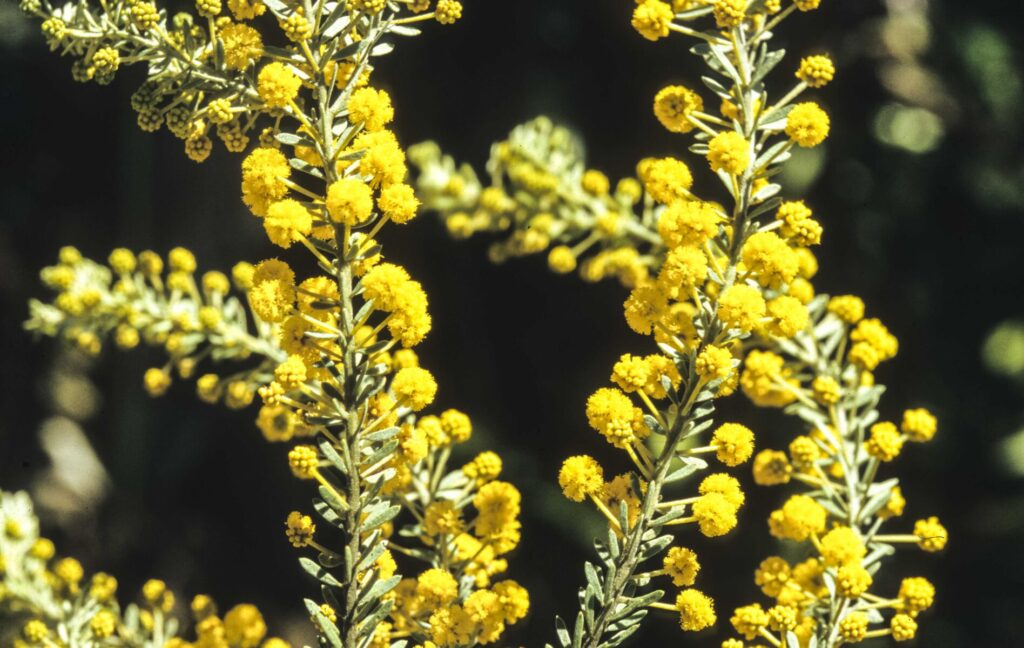
Acacia mariae is an erect or spreading shrub to 2 metres high, with smooth bark. It is naturally found mostly in the central and western parts of New South Wales, being fairly common in the Pilliga Scrub, growing in sand. It tends to be found in Eucalyptus–Callitris dry sclerophyll forest, woodland and mallee communities. There are also some North Coast collection records.
Acacia trinervata
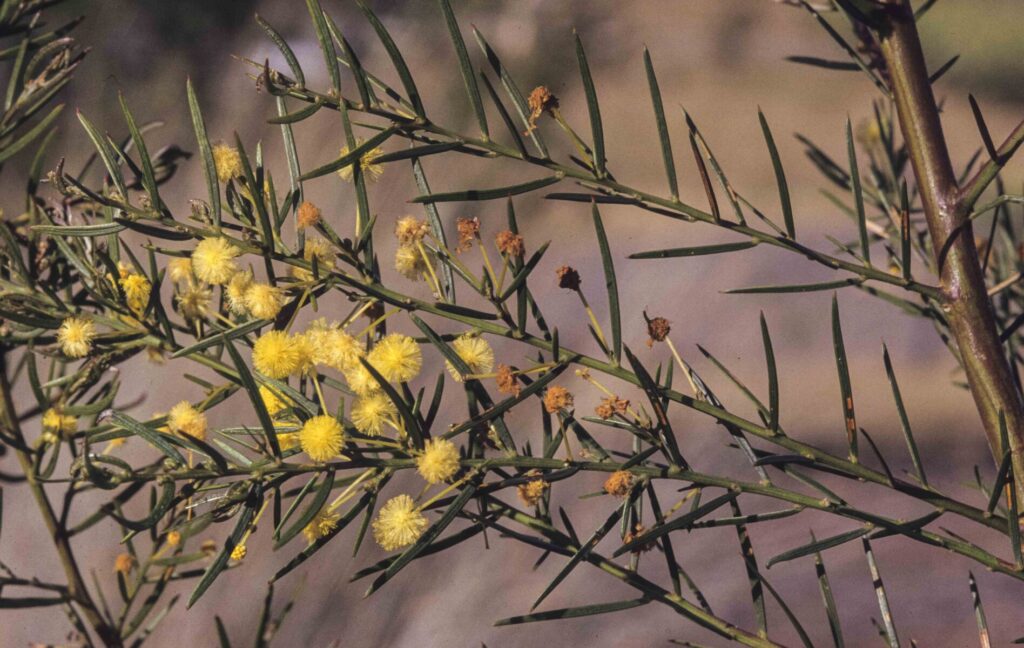
Acacia trinervata is an erect or spreading shrub growing to 3 m high. The phyllodes (modified leaves) are very narrowly elliptic to linear with a pointed sharp tip, to 5 cm long and to 3 mm wide. Flowers are produced in globular heads with each head having up to 30 flowers. The heads are produced solitarily in the phyllode axils and are up to 8 mm in diameter. Hence, each wattle flower is very small.
